What's Happening Here?
Last week, I came across something on a crop of Mustard Red Giant that I thought I'd pass along. I nearly walked past this, but curiosity got the best of me and I had to check it out. Here's what I saw:
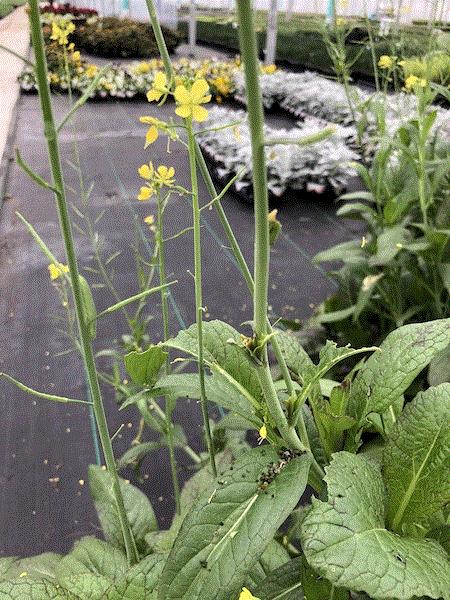
I think you can see what's going on, at least generally. If you look close enough, the cause of the problem is there. Take a closer look. Now it's time for me to ask, "What's happening here?"
Earth Alive Soil Activator
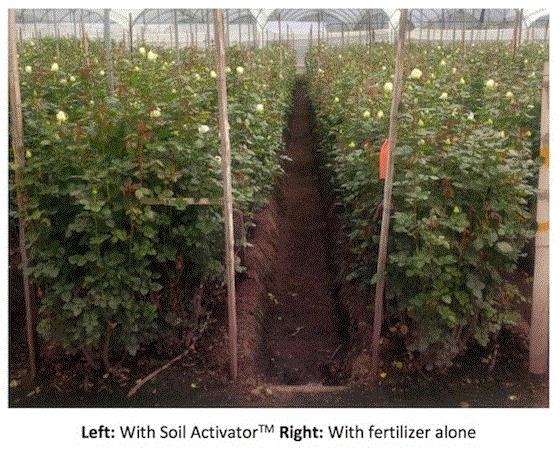
Here's a product I thought might be of interest to you. It's Soil Activator from Earth Alive. Soil Activator is a biofertilzer containing a proprietary blend of naturally occurring soil microbes (Bacillus subtilis, Bacillus amyloliquefaciens and Pseudomonas monteilii) with an all natural synergist active.
In short, Soil Activator increases the solubility and availability of nutrients and improves their ability to manage environmental stresses. Soil Activator improves plant vigor and has been shown to improve plant productivity. Check out the effect of Soil Activator on cut flower rose production from trials conducted in Ecuador.
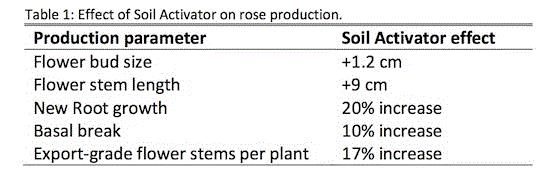 Soil Activator from Earth Alive is an amendment that's been proven to help growers decrease fertilizer inputs, increase water retention, improve plant health and increase yields. One last note: Earth Alive Soil Activator is organic-compliant.
Soil Activator from Earth Alive is an amendment that's been proven to help growers decrease fertilizer inputs, increase water retention, improve plant health and increase yields. One last note: Earth Alive Soil Activator is organic-compliant.
If the above benefits peaked your curiosity, visit the Earth Alive website for more details and research results with other crops.

Botrytis Webinar

Next week, GrowerTalks is hosting a webinar I thought you should know about. Dr. Janna Beckerman and Dr. Aaron Palmateer will both be presenting a webinar titled, "New Research, New Innovation in Botrytis Management" next Tuesday, October 16, 2018 at 1:00 p.m. Eastern/12:00 p.m. Central.
They'll be covering some of the latest research results on fungicide efficacy for botrytis control and details on the new fungicide Broadform by Bayer. I know both of the presenters and anticipate they'll pack this webinar full of information you can use.
As an added bonus, registered attendees will be entered into a drawing for a chance to win one of four free bottles of Broadform.
Register for this FREE webinar at www.growertalks.com/webinars.
More Diva's Pick
In the last issue, I shared several of Stephanie Cohen's (aka The Perennial Diva) favorite new perennials. She really over-delivered and gave me more than I could put in a single newsletter. I'll take it as a good sign for our industry when there's more than just a few solid introductions per year (after all, you know how hard it is to impress a diva). Here are a few more of the new perennials that impressed her:
Amsonia Storm Cloud
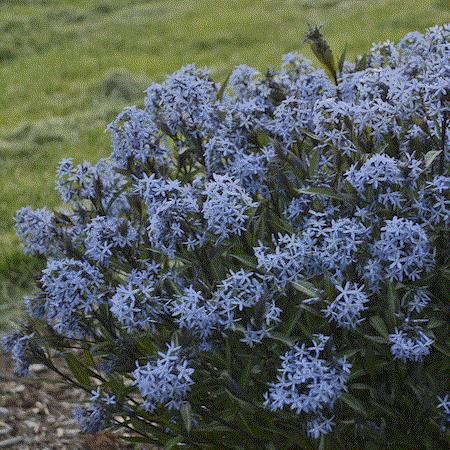
www.waltersgardens.com
Here's a great spring-flowering native perennial from Proven Winners. Storm Cloud emerges with black stems in the spring, the leaves are very dark green with silver veins and the plant nearly covers itself with light periwinkle blue star-shaped flowers in the late spring. Storm Cloud offers a great garden presence throughout the seasons and is hardy to Zone 4.
Echinacea Tweety
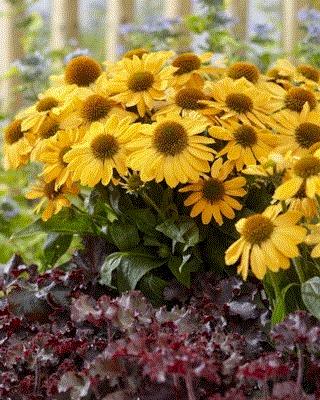
www.conceptplants.com
Tweety is a new echinacea from Concept Plants. Don't be fooled by this dwarf echinacea (only 10-in. tall), Tweety has tons of flower power. It produces loads of bright yellow blooms from early summer to fall. This coneflower is hardy to Zone 4 and performs as well in decorative pots as it does in the landscape.
Penstemon Dakota
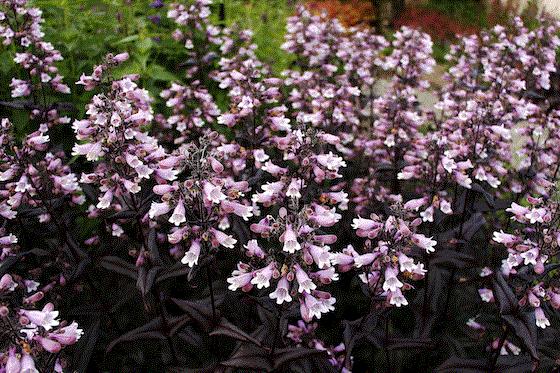
www.terranovanurseries.com
Stephanie thinks Penstemon Dakota Burgundy from Terra Nova Nurseries is "amazing!" and I don't disagree. Dakota is more compact than other dark-foliaged penstemon, but don't let this description confuse you. When I think of compact, I think of a plant being dwarf or miniature. Dakota isn't dwarf; it's more of an intermediate-sized perennial with 12-in. purple black foliage topped in the summer with lovely lavender-to-violet flowers for a total plant height of about 24 in. It's tough, long lived and cold hardy (to Zone 3).

The Answer is ...
At the top of this newsletter, I showed the image below and asked if you could figure out what's happening with the mustard:
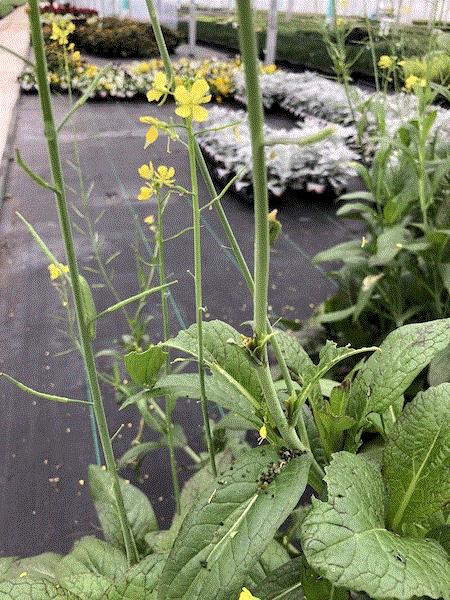
Perhaps you don't know the specific cause of the problem, but I suspect that you can see the general cause. The two main clues are the leaves or partial leaves that have been consumed and the frass (or droppings) on the leaf surfaces. When you see these two things, it's usually an indication that some typc of caterpillar or looper is feeding on the plants. If the frass is fresh, the culprit can usually be found somewhere above the droppings.
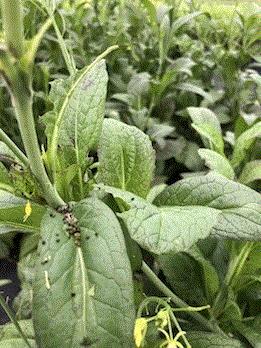
Frass (poop) on the leaves. |
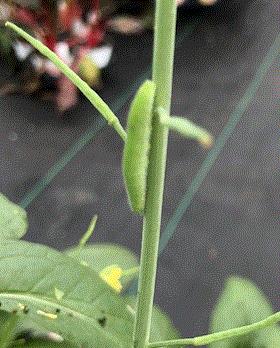
Close-up of the pest.
|
Were you able to spot the pest in the original picture I shared? If not, here's a closer view (above right). Have you seen this before? Do you know what it is? That's right—the culprit feeding on the mustard is one of the pupal stages of an imported cabbageworm, aka Cabbage Butterfly or Cabbage White (Pieris rapae). Here's the adult:
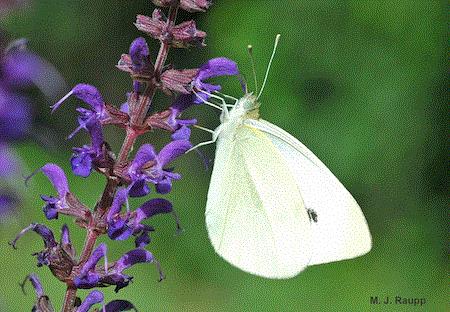
I thought you'd recognize it.

Managing These Pests
When growing perennials, you'll likely observe caterpillars and loopers from time to time. Fortunately, they're relatively easy to manage and the damage they cause can be kept to a minimum if they're spotted early. Otherwise, they can be devastating and nearly defoliate an otherwise healthy crop.
Depending on the population, control methods can range from simply removing these pests by hand to controlling them using various biological or chemical strategies.
The most common biological method of controlling caterpillars and loopers is using the bacterium Bacillus thuringiensis var. kurstaki (Bt). Multiple applications of Bt is usually necessary to provide adequate control. Several biorational products provide effective control of caterpillars, including azadirachtin, spinosad, tebufenozide and Beauveria bassiana.
The most effective insecticides for controlling caterpillars and loopers include acephate, chlorfenapyr, cyfluthrin, bifenthrin and permethrin. These products are most effective when they're applied to the younger, more susceptible life stages.

Wage & Benefit Survey
The deadline (October 19, 2018) is fast approaching to participate in the 23rd Annual GrowerTalks and 10th Annual Green Profit Wage & Benefit surveys. Fortunately, there's still time to participate and get your name in the running to win a 128 GB iPad. Click the links below to take the surveys.
GrowerTalks Wage & Benefit Survey (for growers): www.surveymonkey.com/r/JGJJM3F
Green Profit Wage & Benefit Survey (for retailers and grower-retailers): www.surveymonkey.com/r/QC3STTQ
Thanks for your participation and a special thanks to Florasearch, Inc. for sponsoring these surveys. I wish you the best of luck with winning the iPad.
Remember the deadline is October 19, 2018.



Thanks for reading this edition of Perennial Pulse. Fall is here and it won't be long until the first snowfall. With that being said, please feel free to let me know what challenges you anticipate facing in the winter season. Drop me a line and I'll try to cover these topics for you in upcoming issues. Can't think of anything? That's okay—you can send me a quick "hello" anytime.
My email is ppilon@ballpublishing.com.
Best regards,
Paul Pilon
Editor-at-Large
Perennial Pulse
This email was received by you and over 33,753 subscribers!
If you're interested in advertising in Perennial Pulse, contact Kim Brown ASAP and she'll hook you up.